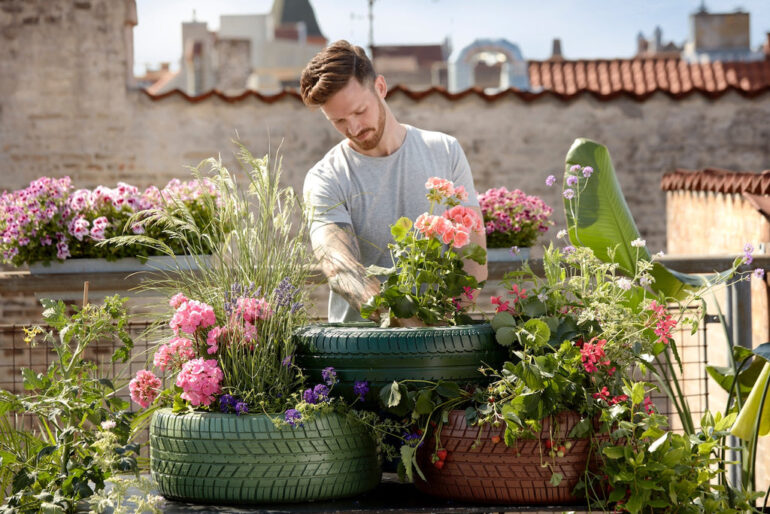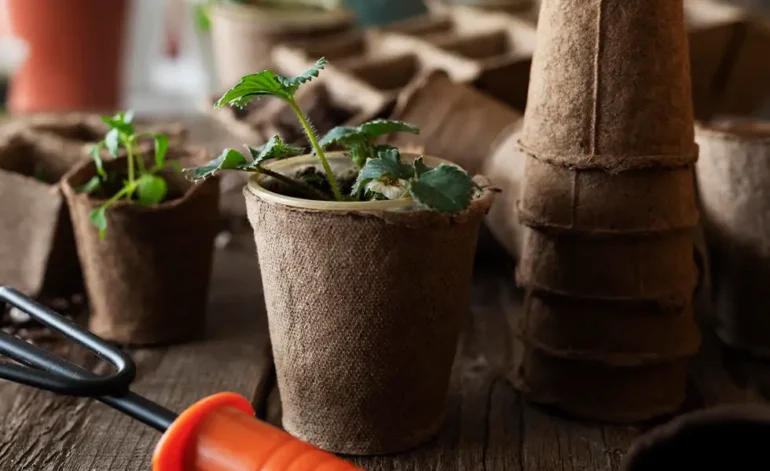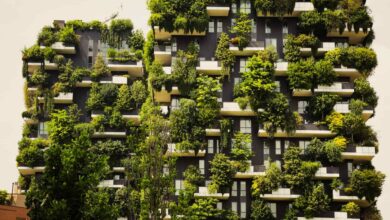In the ever-evolving world of gardening, the use of alternative materials is reshaping our interaction with nature, blending traditional practices with innovative solutions.
From rooftop gardens to backyard oases, the push towards eco-friendly and sustainable materials has opened a Pandora’s box of creative possibilities.
This transformation is not just about aesthetics; it’s a profound statement about our relationship with the environment, where every choice reflects our commitment to a greener, more sustainable future.

One of the star players in this revolution is composite fencing, a marvel of modern technology. This material, often made from a blend of recycled plastic and wood fibres, offers a durable, low-maintenance alternative to traditional wooden fencing.
Its resistance to rot, pests, and weathering, combined with its longevity, makes composite fencing a wise investment for the eco-conscious gardener. What’s more, the array of designs and colours available can complement any garden style, from rustic charm to contemporary chic.
Beyond fencing, alternative materials are making their mark in various aspects of gardening. For instance, recycled rubber, once destined for landfills, is now finding new life as garden paths, mulch, and even potting containers. Not only does it provide a cushiony underfoot, perfect for avid gardeners spending long hours tending to their plants, but it also offers excellent drainage, a critical factor for plant health.
Cork, another eco-friendly contender, is being repurposed as plant markers, garden bed borders, and even soil conditioners. Its natural resistance to mould and rot, coupled with its sustainability (cork is harvested from the bark of trees without harming them), makes it an excellent choice for gardeners looking to reduce their carbon footprint.
In urban settings, where space is at a premium, innovative materials like lightweight, aerated concrete and repurposed plastics are enabling vertical gardens to flourish. These gardens not only provide a splash of greenery in concrete jungles but also help in temperature regulation and air purification.

Another intriguing development is the use of biodegradable planters made from materials like coconut coir, rice husks, and natural resins. These planters, which decompose and enrich the soil after their useful life, offer a stark contrast to traditional plastic pots that take centuries to break down.
The integration of technology with gardening has also brought about materials like smart fabrics and hydrogels. These futuristic materials can conserve water and nutrients, offering a lifeline in regions where these resources are scarce.
At the core of this shift towards alternative materials is a growing awareness about the environmental impact of our gardening practices. By choosing sustainable, recycled, or repurposed materials, gardeners are not just creating beautiful spaces but also contributing to the health of our planet.
As we continue to explore the vast array of alternative materials available, our gardens become not just spaces of beauty and tranquillity but also testaments to innovation and environmental stewardship. In the end, these materials remind us that every small step towards sustainability is a giant leap for the well-being of our planet.






